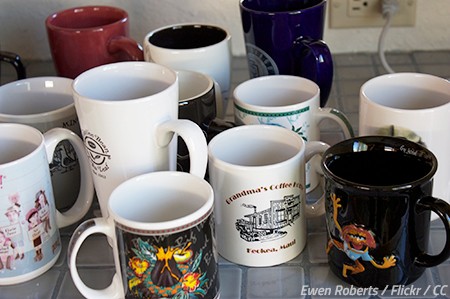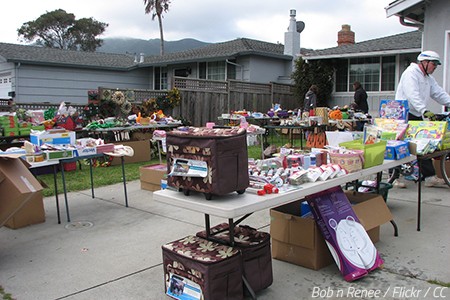Packing for a move is anything but easy.
In reality, there are so many things to sort out, protect, and pack for the upcoming relocation that the job often feels overwhelming even before you start working on it. Packing for moving is, without a doubt, the most challenging project during a house move so you must make sure you’re up to the heavy task.
Luckily, some household items are easier to pack than others. One good example is packing your clothes – your pieces of clothing are not fragile in any way, so you shouldn’t actually worry about whether they will arrive in one piece or not simply because they will. They might end up a bit wrinkled up but that’s not a big worry, is it?
While packing clothes for moving, you’ll also reach the point of having to also pack hangers for moving. That’s right – packing hangers for a move seems like a very easy thing to do but there are a few peculiarities about that packing job too.
What’s the best way to pack hangers when moving? These 10 packing steps will show you the correct way.
Step 1. Decide if your hangers are worth packing and moving
With so many things to pack during a house move, you should seriously ask yourself if packing hangers for a move is even worth the time and effort you’ll have to invest in the packing task.
Here are the top reasons why you should pack your hangers when moving house:
If you have wooden hangers in excellent condition, there isn’t a single reason why you shouldn’t transport them with you to the new house;
If you own designer hangers, then you should definitely pack and move those because they will be fairly expensive and of high quality too;
Moving your hangers means that you’ll be able to arrange your clothes in the wardrobe or closet right after you move into the new place.
However, packing and moving your clothes hangers is not always a good decision. Here are the top reasons why you shouldn’t bother packing your hangers for moving in some situations:
Clothes hangers take up plenty of space, especially when they are not stacked up nicely but rather just thrown randomly into a box;
Clothes hangers are cheap, especially plastic ones, so it may not be worth the time and effort to transport them to the new home;
Hangers can easily get broken during a move unless you know how to protect them properly for the road ahead.
Step 2. Understand why hangers are tricky to pack for moving
Packing hangers for moving seems like a pretty straightforward thing to do and in a way, it is just that. However, it can be somewhat tricky, especially if you’ve never done it before.
There are several reasons why packing hangers for a move can be trickier than you think:
Clothes hangers have the tendency to tangle in each other, partly due to their (metal) hooks and mostly due to their shape. Once they get tangled, hangers can easily get broken or in less extreme cases, bent out of shape.
Hangers, especially the ones with metal hooks, could easily scratch the surfaces of other items – for example, damage the wardrobe or closet if they are left loosely inside it, totally unprotected.
Unless hangers get neatly stacked, they will take plenty of space inside a moving box when they are just tossed carelessly and hastily inside the container. And if that happens, the storage space you could have used to pack something meaningful would be simply lost, thus forcing you to use yet an extra box for the purpose.
Step 3. Sort your hangers prior to packing them up
Group your clothes hangers by material before packing them up.
This step is all about sorting out your hangers into 2 major groups:
Group 1. Hangers you’re moving with you.
Group 2. Hangers you’re leaving behind.
Step 1 in this hangers packing guide has already given you some clues as to which clothes hangers are worth keeping and which ones are not. In a nutshell, here are the signs that will help you sort out and group all your hangers correctly:
Hangers that are worth packing and moving (Group 1):
Hangers in excellent or good condition, including brand-new ones;
Plastic, wire, or wooden hangers of good quality;
Designer hangers;
Hangers that are already in use and you’re moving some of your clothes together with them.
Hangers that are NOT worth packing and moving (Group 2):
Broken hangers, including ones that have been fixed temporarily;
Worn out or stained hangers;
Very cheap and non-remarkable hangers (most often plastic ones) that you can purchase brand-new after the move.
Packing Checklist: Packing Timeline for Moving
Step 4. Give away or throw away for recycling all hangers you won’t use
There’s really no point in packing and moving any hangers that fall into Group 2. And this basically means that you’ll be better off giving away or throwing away those clothes hangers depending on their overall condition.
If the hangers you’re not taking with you happen to be fairly OK and can still be useful to somebody else, then do consider giving them away to a person who you know might need them. Another option is to donate those hangers – try second-hand clothes stores or certain charitable organizations that accept clothes. Also, dry cleaners usually accept wire hangers in good condition for reuse.
But if the hangers you’re not moving with you cannot be reused – too old, too broken, or too stained, then your only viable option is to throw them away for proper recycling. Make sure you discard them in the correct recycle bin.
How to Get Rid of Stuff Before Moving
Step 5. Leave the hangers on your clothes (wardrobe box)
Believe it or not, the best way to pack hangers when moving is to pack some of your clothes together with their hangers. And how should you do it?
It’s easy enough: simply take your hanging clothes from the wardrobe or dresser as they are placed on their hangers and transfer them carefully into a wardrobe box of the right size. For your information, wardrobe boxes are specialized containers for transporting hanging clothes – they look like miniature versions of clothes dressers and have a metal bar on the top on which you should hang the clothes.
Clearly, using wardrobe boxes is the easiest way to move clothes on hangers but it’s far from being the cheapest one – depending on its size (small, medium, large), a single wardrobe box will cost anywhere between $10 and $15. Also, wardrobe boxes are rather bulky and will take plenty of space inside the moving vehicle as well.
Step 6. Leave the hangers on your clothes (garbage bags)
Clean, durable garbage bags will enable you to pack up the hanging clothes in your closet in no time.
Another good way to pack hangers together with your hanging clothes is to use a simple yet highly practical trick to speed up the packing process: to pack clothes on hangers in garbage bags.
Here’s how it’s done:
Take a clean (brand-new), durable garbage bag and poke a hole in the very center of its bottom;
Tie a small cable tie (twist tie) around the hooks of a group of 5-6 hangers as they are placed inside the wardrobe or dresser. The hanging clothes should be similar in type and size;
Get the tied hooks through the small bag opening and pull down the plastic bag over the grouped clothes until it covers completely the hanging clothes;
Secure the open end of the trash bag by either pulling on its drawstrings or taping it with some bits of packing tape.
Using this famous clothes packing trick, both your hangers and clothes will be packed for moving together, quickly and safely.
Step 7. Group and stack your hangers properly
One of the most important steps when packing hangers for moving is to group and stack the items properly so that they take as little space inside a box as possible.
The first thing you should do is group all the hangers you’re moving by size and material. As a rule, not all clothes hangers are of the same size though they come pretty close. For obvious reasons, it would be very difficult to pack together hangers of various sizes, so make things easier on yourself from the start.
Next, you should group all hangers by material. In other words, you should stack and pack in bundles only hangers made of plastic, and so on. It’s OK to bundle together plastic and wooden hangers of similar size but you should remember to keep wire hangers separately from the rest of the clothes accessories for safety reasons.
Stack neatly one hanger on the top of another in bundles of 10-12 pieces. As mentioned above, do not mix wire hangers with plastic or wooden ones.
Step 8. Use rubber bands or stretch wrap to secure the hangers
Once you’ve created neat stacks of clothes hangers, it’s time to secure them for safe transportation.
One good way to secure hangers is to use long rubber bands.
Use long rubber bands for the job. If you have a bunch of shorter rubber bands, just tie two or three ones together and it should be OK.
Get a rubber band around the neck of the bundled hangers, stretch it down and around the bottom bars, and then tie it up again at the neck part to fix the entire bundle in place.
Use a second rubber band if the bundle of hangers looks and feels flimsy.
Another way you can pack hangers together is to use stretch wrap. Simply go around the stacked clothes hangers twice with the stretch film and you’re good to go. Do NOT use regular packing tape because it is likely to ruin the top finish of the hangers.
How to Pack Winter Clothes for Moving
Step 9. Arrange the bundles of hangers in a cardboard box
Make sure the hangers cannot move inside the cardboard box.
The next step is to transfer the sorted and bundled clothes hangers into a cardboard box.
However, before you do it, place a sheet of clean packing paper along the bottom of the box for extra protection. Then, start arranging the pre-grouped hangers into the box by material, meaning that when you’ve done packing up all the plastic hangers, then start with the wooden ones, and finally, finish it up with your wire ones.
There isn’t any specific way to arrange the bundled clothes hangers into the box – just make sure the hooks of one bundle cannot get entangled with another one. Nevertheless, the most natural way to pack hangers into a cardboard box is to do it flat by stacking them up along the sides of the container. Use pieces of paper to fill in any gaps between the hangers so that they cannot move inside the box.
When done, place a second sheet of packing paper on the top, close the box, seal it with packing tape, and label it accordingly.
Step 10. Avoid these mistakes when packing hangers for a move
Now you know how to pack hangers for moving. As you can see, the packing task is not complicated in any way and you’ve got good options, including packing the hangers together with the clothes – either in wardrobe boxes or in plastic bags.
Nevertheless, there are several mistakes that you could make while packing hangers for a move – judgment errors that will not only lead to lost time, but possibly to broken hangers or sometimes even worse – damaged pieces of clothing.
Here are the top 3 mistakes that you should avoid making when packing hangers when moving:
Do not leave any hangers inside the clothes dresser or wardrobe if you intend to move the furniture item with you. Having hangers loose inside it may scratch the sides of the furniture piece.
Do not throw hangers randomly into cardboard boxes. Doing so will increase the chance of them tangling into each other and breaking during transport. Also, the storage room inside the box will not be used efficiently, to say the least.
Do not combine hangers of different materials – this is especially important for wire hangers. Always groups hangers by material to prevent any damage during transport.
Packing for a move is a huge project and you may not be able to handle it on your own, especially when you’re moving in a hurry. Consider hiring professional packers if you’re running out of time or you feel rather overwhelmed by the great number of household items to protect for the road ahead.
The post How to Pack Hangers for Moving: Just Hang In There appeared first on The Moving Blog.







